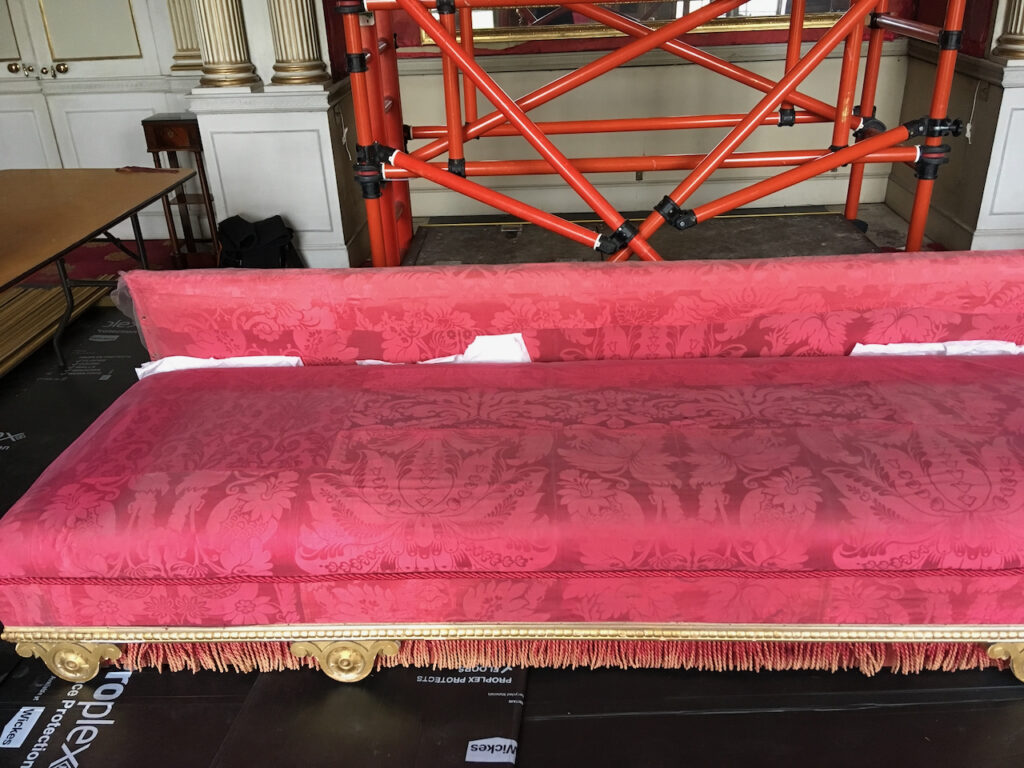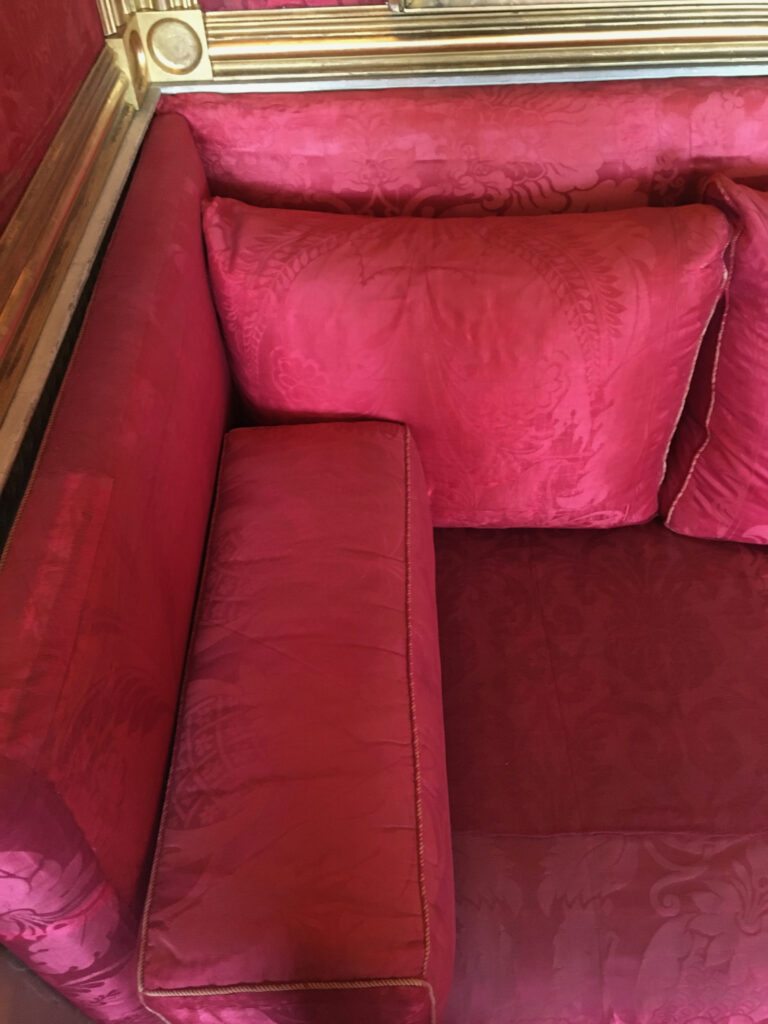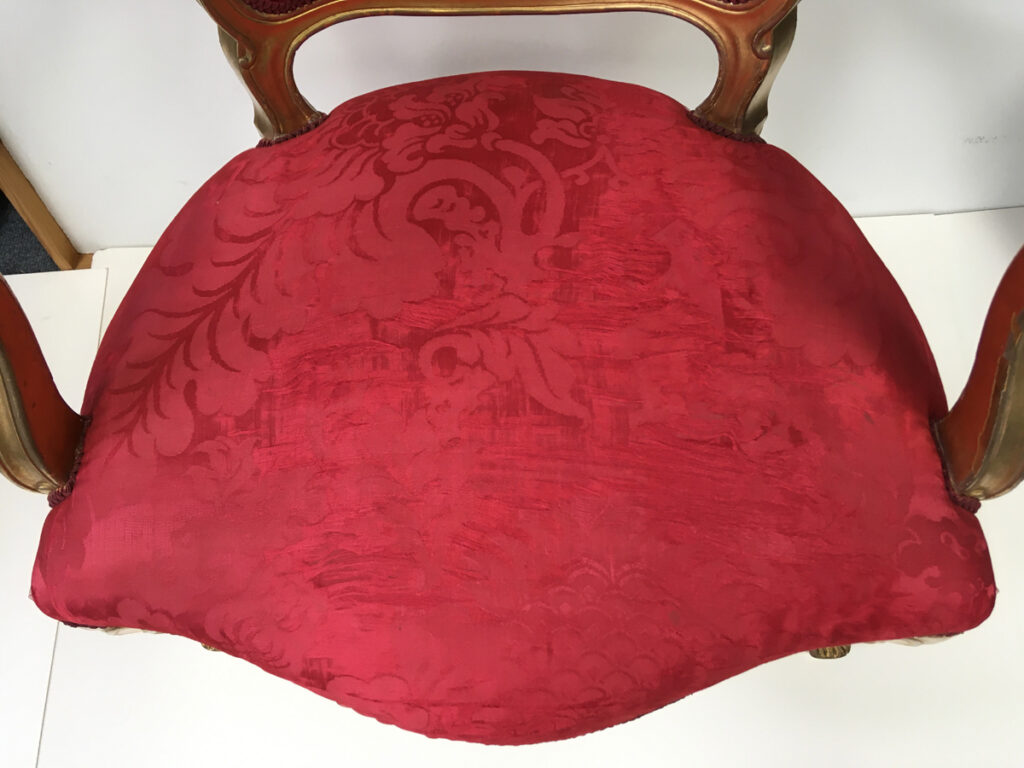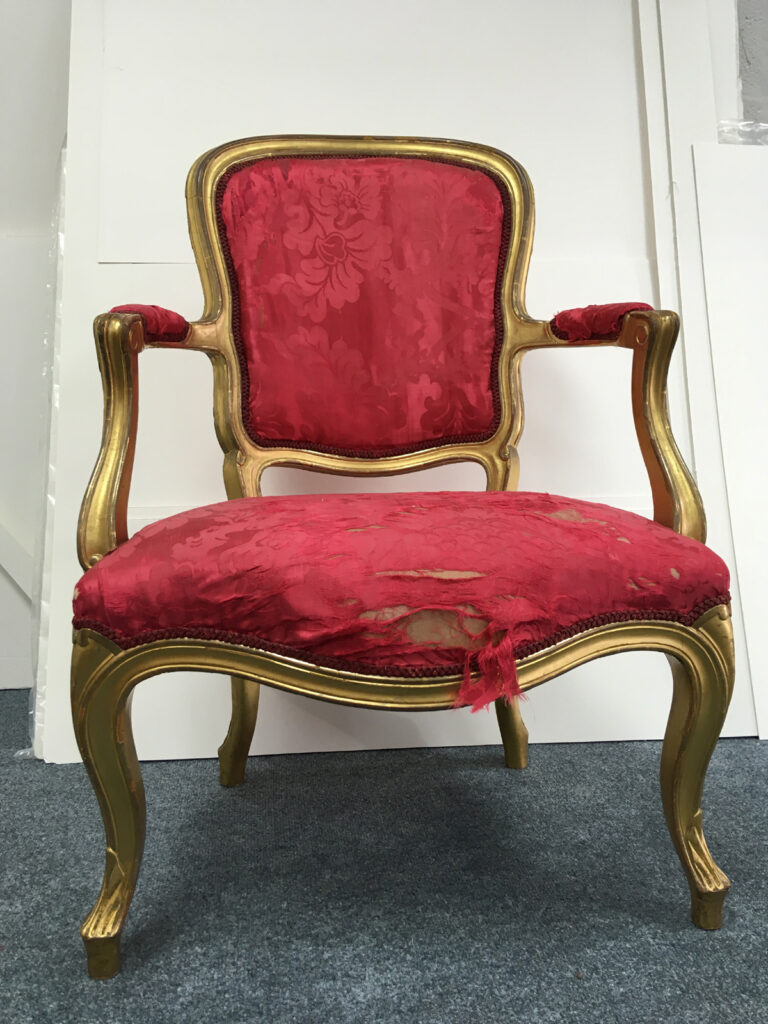History
The Sultana Room at Attingham takes its name from the ‘sultane’ (sofa) which sits in an alcove in the room. Designed by Gillows of Lanacaster, the alcove retains its Regency silk wallcoverings, along with the sultane and a suite of ten armchairs. Over the years wear and tear has led to various phases of repair, and the matching curtains which originally hung in swags either side of the alcove have long since been retired.
Passive treatment
I was asked by the National Trust to propose a treatment plan for this suite of textiles which would protect all original material and also any patching and repair which had been carried out by Lady Berwick in the early twentieth century. I devised a largely passive treatment, with minimal disturbance to the original textiles. Working on site for several weeks, I started by removing an old conservation net which had been applied about forty years ago and was no longer fit for purpose. It was coarse and unsightly, the colour was ill-matched, and it gave the entire suite a dusty appearance. Once removed, I was able to surface clean all the textiles using small vacuum cleaners and pony hair brushes. On the walls, it was necessary to remove the gilded moulding in order to facilitate access to the entirety of the wall coverings.
New coverings
Working on a tower scaffold, I applied new conservation net to both protect and stabilise the original silk, and the later silk patches that had been applied during Lady Berwick’s time. The net is a fine grade nylon, which I dyed to match the original colour and is invisible unless viewed from close quarters. It was necessary to remove the sultane from the alcove for this process, and I was thus able to apply the same treatment to this furniture whilst access was improved. All of the cushions and bolsters on the sultane were similarly treated.
Chairs
The ten armchairs required an additional treatment. Holes in the seat and arm coverings, where the white underlayers showed through, were disfiguring. Without removing the covers, I dyed colour-matched silk and inserted patches of this into the holes and under the covers. This masked the losses, and the application of my dyed net over the top then stabilised all the elements with minimal intervention.
Visitor engagement
The treatment of these textiles was all carried out on site in front of the visitors throughout 2019. I was able to engage with different groups and individuals and explain the conservation and processes involved, which enhanced the visitor experience for many people.
In Local Media
This project was featured in local media: interview with local media



















